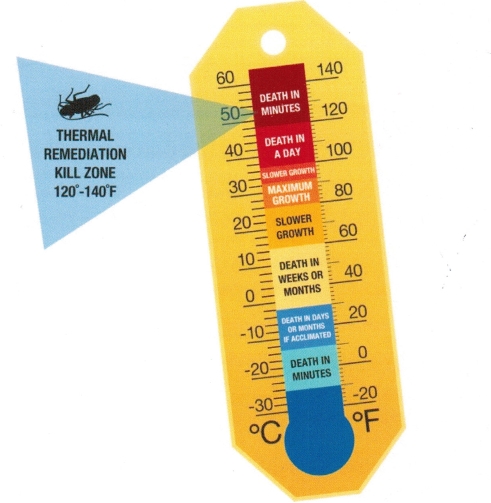Bed Bug Services Fundamentals Explained
The Buzz on Bed Bug Services
Table of ContentsLittle Known Facts About Bed Bug Services.Rumored Buzz on Bed Bug ServicesIndicators on Bed Bug Services You Need To Know
High-temperature treatment is one of the most effective solutions for eradicating bed bugs from homes, apartments, and commercial properties. Unlike insecticide treatments that require repeated applications, heat reaches all hiding spots, killing bugs at every stage in a single session. Learning the process behind heat treatment helps clients feel confident in choosing this method.The principle of heat treatment is simple yet powerful. Bed bugs cannot survive when exposed to high temperatures. Studies show that environments reaching 122°F destroy both adults and eggs. For thorough eradication, professionals usually maintain higher temperatures so that dense furniture and wall voids reach lethal levels. Maintaining sustained heat makes sure that every hiding place is affected.
:max_bytes(150000):strip_icc()/Bed-bug-control-tips-and-tricks-2656377-e580f433c55a4a98826e429753062084.jpg)
10 Easy Facts About Bed Bug Services Explained
When the heating process starts, they set up powerful heaters along with circulation fans to circulate hot air. Rather than rushing the temperature increase, the temperature is raised slowly, to protect belongings and keeps them from finding refuge in cooler areas.

After the treatment, heaters are turned off and the area is left to naturally cool. Many companies perform post-treatment inspections and provide documentation showing what temperatures were achieved and how long they lasted. This proof offers peace of mind and proves the infestation was treated.
Heat treatment has unique benefits. It does not involve pesticides, which is perfect for households avoiding chemicals. navigate to this website It is often fast and efficient, allowing businesses to reopen promptly - Bed Bug Services. Heat also penetrates cracks, wall voids, and dense fabrics. Unlike some methods, it kills all stages of bed bugs at once, preventing the need for repeated visits
Some Of Bed Bug Services
While highly effective, heat treatment has some limitations. It can be expensive for large properties, particularly in multi-unit buildings. Reinfestation is possible if people bring them in again, so ongoing monitoring is important. Certain items may warp or melt under his explanation heat, and in multi-unit housing, follow-up monitoring is critical.
Many professionals follow heat with inspections and preventive measures to ensure lasting results. Follow-up devices and careful inspections can provide additional protection.
After treatment, long-term prevention is key. Regular inspections of mattresses, Get More Information upholstery, and closets help catch early signs of activity. Mattress and box spring encasements make inspections easier, while limiting hiding spots can minimize future infestations. Being careful with incoming belongings is also important to prevent bed bugs from returning.
Heat treatment remains the gold standard for challenging bed bug problems. It provides a fast, eco-friendly, and thorough solution that restores peace of mind. When executed by expert technicians, it resolves even stubborn infestations without the lingering effects of chemicals, allowing residents or business owners to return to normal life.